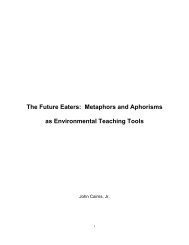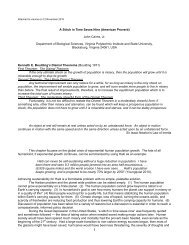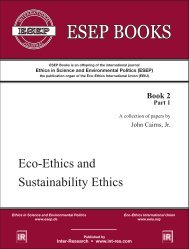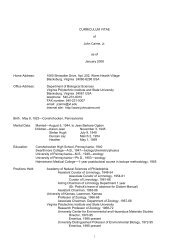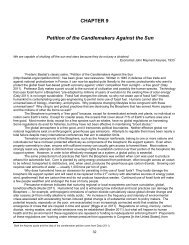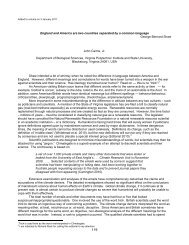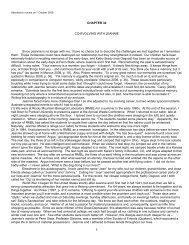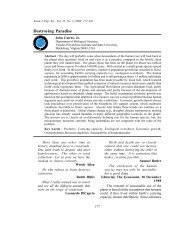View - ResearchGate
View - ResearchGate
View - ResearchGate
Create successful ePaper yourself
Turn your PDF publications into a flip-book with our unique Google optimized e-Paper software.
Article 35297THE RELATIONSHIP BETWEEN STRUCTURE AND FUNCTIONThree major possibilities exist in the relationship between structure and function:(1) Structure and function of natural communities are so closely interrelated that it is impossibleto change one without changing the other,(2) Structure (i.e. number and distribution of species) is more sensitive than function becausefunctional redundancy will compensate for loss of species to a certain degree, and(3) Function is more sensitive than number of species because it is possible, at least in theshort term, to diminish species function and well being without actually killing the species.The latter is common in ecotoxicological tests when endpoints (e.g. respiratory function, swimmingability, visual acuity, and the like) other than death are used.FALSE NEGATIVES AND FALSE POSITIVESBiological monitoring systems are generally designed to provide an early warning of change sothat remedial measures may be taken as soon as possible. All monitoring systems are plagued withfalse positives and false negatives. A false negative is a signal indicating no deviation from thequality control norms has occurred when, in fact, change has occurred. A false positive is a signalindicating a definite deviation from the previously established norms, when none has occurred.False positives and false negatives should be expected when a monitoring system is being establishedunless normal variability is well understood. Trend analysis should be based on attributesthat are not likely to demonstrate high variability, are not likely to disappear as a result of normalsuccessional processes, have high predictive value for other attributes, and are likely to be persuasiveto both the scientific community and policymakers. Use of inappropriate or unstable attributesfor long-term trend analysis is most unfortunate since each shift causes a ‘down time’ duringwhich the trend analysis is ineffective or partially so. Regrettably, this instance may be the time it ismost needed.THE ROLE OF EDUCATIONIf both natural capital and ecosystem services are essential to sustainable use of the planet, thenpreserving self-regulating ecosystems and subsidizing those in need of help become an urgentmatter. Educational systems must include sustainability as a part of each course. The task is not asformidable as it sounds. Years ago, several graduate students and I helped acquaint a high schoolteacher and his class with the fundamentals of ecological restoration. The particular ecosystemchosen as a class project was a landfill fairly close to a historic park and a scenic parkway. A landfill,for those not familiar with this particular word, is a place where all of the refuse of society istaken and buried. This includes all items not presently being recycled in some way and at sometimes classified in general as household waste, although many landfills contain industrial andmunicipal waste as well. In this particular landfill (seven or eight years ago), the wastes were compacted,baled, and stacked neatly. This refuse was then covered with clay or other materials toreduce water penetration and then a layer of topsoil to encourage revegetation. Not surprisingly,the students were horrified at the amount of waste arriving in truckload after truckload. We encouragedthese students to determine how much refuse each of their households produced and whatthe average was for each household in the urban area. This awareness is, of course, one of theessential steps to achieving sustainable use of the planet.The main purpose of the class project, however, was to determine what type of ecologicalrestoration would be most appropriate once the landfill was sealed. The students conducted



